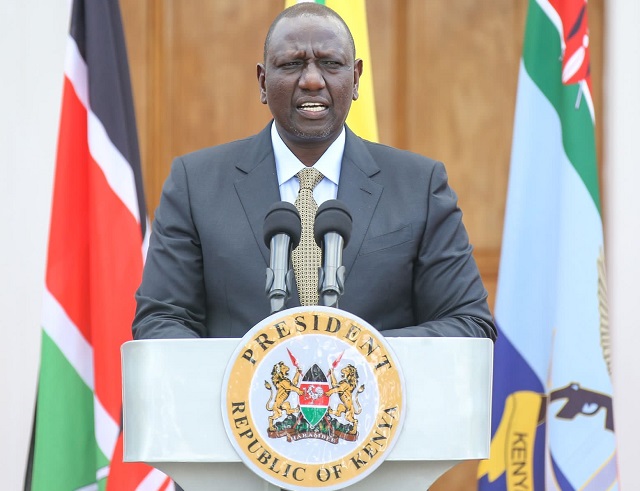
NEWS ANALYSIS | THE INDEPENDETN | The Kenya Shilling has steadily been declining against most currencies, including global leaders like the US Dollar and regional currencies, mainly the Uganda and Tanzania Shilling.
For so long, the Uganda Shilling traded at an average of 30 to the Kenya Shilling and one needed just 100 Kenya Shillings for each US Dollar. Today, the Kenyan currency goes for just 25.6 Uganda Shillings, while the US Dollar is exchanged for 146 Kenya Shillings, according to the central banks of Uganda and Kenya respectively.
The Kenya Shilling has also, though marginally, depreciated against the Tanzania Shilling to 17.26 from 18.2 at the beginning of the year, and against the Rwanda Franc to 8.26 from 8.7. However, it has fared worse against the Ugandan currency which has been appreciating lately against most of the world currencies.
All currencies of the EAC partner states recorded depreciation against the US Dollar except for Uganda which appreciated by 0.6 per cent, according to the Ministry of Finance, Planning and Economic Development. Burundi recorded the highest depreciation of 3.8 per cent followed by Rwanda, Kenya, and Tanzania with depreciation rates of 2.2 per cent, 1.8 per cent and 0.3 per cent respectively.
The local currency is being propped by an increase in exports. For example, in May 2023, total export values for the month amounted to 585.8 million US Dollars, compared to 351 million US Dollars registered in May 2023, according to the Bank of Uganda’s latest records. The ministry also attributed it partly to increased budget support inflows in May and June.
In the month of June 2023, the Uganda Shilling gained strength against the US Dollar with an appreciation of 0.6 per cent, as the Kenyan currency continued on a free-fall.
What the Kenya shilling loss of value means
The depreciation trend has defied all predictions including one by President William Ruto that the Shilling would regain to 120 for the US Dollar in April. Due to its unattractiveness to investors, foreign exchange bureaus in Kampala report declining activities on the Kenya Shilling counter, while the margin between the selling and buying rates has narrowed to 0.06 Shillings.
Over the last few months, there has been an increase in the demand for the Uganda Shilling and the US Dollar as people rushed to offload the Kenya Shillings to avoid further losses from the depreciation.
A scarcity of US Dollars in Kenya and the weakening of the Kenyan Shilling is making the market itself less attractive for Ugandans and other exporters, as Kenyan buyers find the imports very expensive because they have to get more Kenya shillings to be able to buy the imported products.
It is one of the reasons Kenya is realizing an increase in exports to Uganda because Ugandans are finding Kenyan products cheaper than a year ago. This is expected to affect Uganda’s trade balance with Kenya this year, according to experts.
The currency scarcity has also reportedly affected investor confidence, forcing them to purchase forex in other countries, especially Uganda and Tanzania or shift their investments altogether to other countries including Ethiopia. Recently, this was echoed by Tanzania President Samia Suluhu Hassan who attributed it to the insecurity in Kenya, “where there is fire”.
In the three months to June, the Central Bank of Kenya reported last week, that net investment inflows into Kenya had fallen from 1 billion US Dollars to 660 million US Dollars, as investors relocate their money due to the political chaos in the country.
While there is no official confirmation of the trend, there is a huge increase in investment inflows onto the Uganda Securities Exchange, USE. Trading in the first quarter (January to March 2023) registered an increase in turnover of 17.2 billion Shillings compared to 8.4 billion registered in the previous quarter, and 7.3 billion for the first quarter of 2022.
Why the currency turmoil in Kenya
While there was volatility in most currencies across the world immediately after the Covid-19 lockdowns were lifted starting late 2020, in other countries, especially in the developing world, the effects were worse than in others. Imported inflation affected the foreign exchange rates in Kenya, East Africa and Africa as a whole, especially as fuel prices skyrocketed.
As the US and UK raised interest rates to curb inflation at home, it meant higher costs of money for developing countries and frontier markets. The breakout of the Russian war on Ukraine in early 2022 did not allow the economies to recover their forex stability as imports became even costlier.
Kenya introduced heavy subsidies for fuel while other countries in the region introduced tax cuts on the commodities, with Uganda the only country to reject any of the moves for fear of longer-term effects.
For Kenya, 2022 saw a reduction in investment inflows while Uganda, Rwanda, DR Congo and South Sudan traders shifted their imports and exports to Tanzania’s ports fearing possible election violence in Kenya.
The exercise went peacefully and there was a return of business and investment in the country, albeit short-lived as the opposition soon launched protests that turned violent. Before he prepared to step down as President, Uhuru Kenyatta scrapped the fuel subsidies, setting the stage for possible sharp increases in the cost of the products.
Currently, the country has the highest petrol and diesel in the region, at 5044.5 and 4665.5 Uganda shillings respectively, compared to 4,700 and 4445 shillings for the two products in Uganda, according to www.globalpetrolprices.com.
As Kenya depleted her foreign reserves mainly due to the subsidies, the central bank could no longer support the shilling against the existing shocks, and this abetted the weakening. For now, it is not clear how far and for how long the currency crisis in Kenya will go as the political unrest has combined with recently introduced tax measures to enhance investor uncertainly.
****
URN
 The Independent Uganda: You get the Truth we Pay the Price
The Independent Uganda: You get the Truth we Pay the Price



